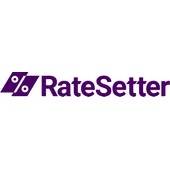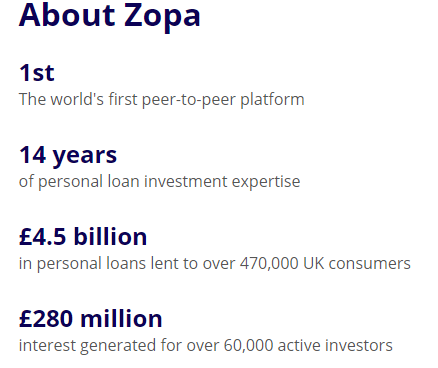Disclaimer: I am not a financial advisor and all information contained on this website is strictly for informational purposes only. Please make your own decisions as Practical Fire is not responsible for you taking control of your financial future, investing for your success or your own personal journey to financial independence. Think for yourselves, and remember to floss.
Ok now you have your first £1000 in the bank it’s time to see that money grow. To give you some ideas of what £1000 can achieve let’s look at interest rates and our favourite compound interest.
£1000 invested at 5% is worth £1050 at the end of one year.
So, £1000 could produce you an income of £50 a year for life. Nothing that exciting I realise.
But consider this instead, what if we invested this £1000 for 10 years and invested the interest as well.
At 5% interest for 10 years, with all pay-outs reinvested we end up with:

We end up with £1628.89
At this point your £1628.89 will produce a yearly income of £81.44. So, we can get an extra £30 a year if we wait.
Now if we’d invested the same amount in the stock market over this period we’d expect returns of around 7% (this is the rough average of the stock market over the last 30 years).
Over 10 years we’d end up with around £1967. Nearly doubling our money.
Then at this point our initial £1000 produces an income of £137.69/year for life.
That’s still not a lot of money.
Yeah you’re right. But what if we kept topping that up by several thousand pounds a year(£167/month). So after our initial thousand the next year we add 2 more then 2 more and so on.
So in total we add 21,000 to our investment account over eleven years. Each year our investment grows by 7%.
After 10 years we end up with………

We end up with £30,694.30 in ten years.
Our capital has grown by £9654. Our now £30,0000 investment now produces a whopping £2148/year for the rest of our life.
This is the secret sauce that the financial independence community relies on, compound growth and regular savings allows you to fast track your wealth and get financially free and not have to work another day In your life….yes please. (Bear in mind investing isn’t the only way to reach financial independence, but it is one of the most popular).
For now, our most important thing is to get started. Once you have got some money growing it’ll become a bug….and you’ll keep finding ways to up your investments…..in fact starting in the next guide.
Ok Our 3 Options
Whilst there are a bunch more options you can go for I’m just going to look at 3 for now to keep it simple.
Option 1: A Savings Account

The best current savings accounts are all regular savings accounts which normally allow you to put £10-300/month away each month for 12 months at an interest rate of 5%. These accounts then default to the base rate of around 0.05%. Beyond this the best savings accounts currently offers 1.61% interest (29/09/2019).
Pros
If you can afford to save regularly each month a savings account will get you in the habit of socking some money away.
The money can be accessed at any time (though sometimes with an interest penalty) which makes this great if you don’t have an emergency fund currently.
Cons
Interest rates are pretty low and are likely to stay low for a long time.
After the year term on regular investments are up these accounts revert back to a pitiful rate.
Summary – Great to build up an emergency fund bad if you want to maximise your investment returns.
If you want to find the best savings accounts, I always recommend moneysavingexpert.com
Option 2: P2P Lending

P2P lending means you essentially act as a bank. You will loan out your money to borrowers and be paid interest. P2P lending platforms allow you to invest money with them, they will then distribute the money across a variety of borrowers who provide you with a set rate of return.
P2P lending sites come in a huge variety of shapes and sizes from ones that invest in businesses like FundingCircle, to Property crowdfunding sites like PropertyMoose to more common personal loan lenders like Zopa and RateSetter.
Each of these types have a place in the financial independence landscape but for now we’ll keep it simple and look at Ratesetter and Zopa who are the two biggest P2P lending firms.
Ratesetter
Ratesetter are one of the largest UK P2P sites and they have a perfect track record of delivering their advertised returns. Currently they offer 3% for east access and 4% for a 5 year fix which is pretty good. The big advantage though is their sign-up bonus offer which will give you £100 for a 1 year investment of £1000. If you only invest for one year this would make your return £130 or 13% in an easy access account this is basically the best you can get. After the year you may want to consider rolling your money into a different account with better rates. I personally use RateSetter’s 5-year market for part of my investing strategy.
You can sign up for this referral offer here – and we both get a bonus!
Zopa

Zopa is the first P2P site and is one of the most popular. The site offers a very good track record of delivering 100% of it’s promised returns for investors. It only invests in A-E loans which means loan default rates are relatively low. This allows them to provide solid returns, currently at around 5.2%.
Pros
Ratesetter’s bonus offer is the best return you can find for a 1 year fix.
Peer to peer platforms now offer ISA’s so your earnings will always be tax free.
P2P now has a fairly solid track record of delivering returns to investors.
Cons
Money is not covered by the Financial Conduct Authority protection, but the large platforms have contingency plans in place.
Default rates on loans could increase if the UK enters a significant economic downturn.
Can be difficult to get your money back early if you need to – though some platforms do offer this feature.
Option 3: An Index Tracker

Index tracker funds are, for many, the backbone of the journey to financial independence. Rather than picking an individual stock you invest in all of the stocks in a particular market. For example, you can invest in the FTSE 100 – which is the 100 largest UK companies, the S&P 500 which is the largest American companies, etc etc. There’s an index tracker for every market in the world.
The reason these are so popular is the fees are very low (circa 0.3%) and you aren’t relying on a fund manager to outperform the market. Your investments will track the market exactly, if the market goes down your money goes down, if the market goes up your cash does.
The reality is that few active fund managers actually beat the market in the long run and most lose against the market and the fees are normally 1-3% which makes your returns much much lower.
If you want super simple investing then index trackers are the best bet. Vanguard offers ISA’s and their lifestrategy automatically invests across a broad spectrum of index trackers.
Pros
Can be super simple.
Average returns are around 7% historically.
Reinvesting of dividends helps compound your returns over time
ISA wrappings make these investments tax effective
Recommended by Warren Buffet
Cons
Subject to market volatility – the market has a habit of crashing from time to time which can be difficult to deal with, particularly if you are a new investor
Historical returns are not a guarantee of future returns.
Can be confusing for first time investors
Higher risk than savings or P2P
If you need to take your investment out you won’t necessarily get all of your money back, if the market has changed.
If you want to know more about index funds then I’ve got a complete guide here.
Which way would you like to invest?
For newcomers I think P2P is great simply because you’ll get to see a nice healthy increase in your funds after a year and you’ll get the investing bug much quicker. Because the stock market can be volatile in any single year it’s not always the best place to start (though in the long run it really is the best) – it’s where most of the FIRE crowd put the majority of their investments so it comes highly recommended. As you can tell I’m not keen on normal savings accounts. If you want easy access then a regular saver with a bank account or an easy access Ratesetter account are good – this is probably the best course of action if you don’t have much of an emergency fund yet.
Let me know what you’re investing your first thousand in below!
